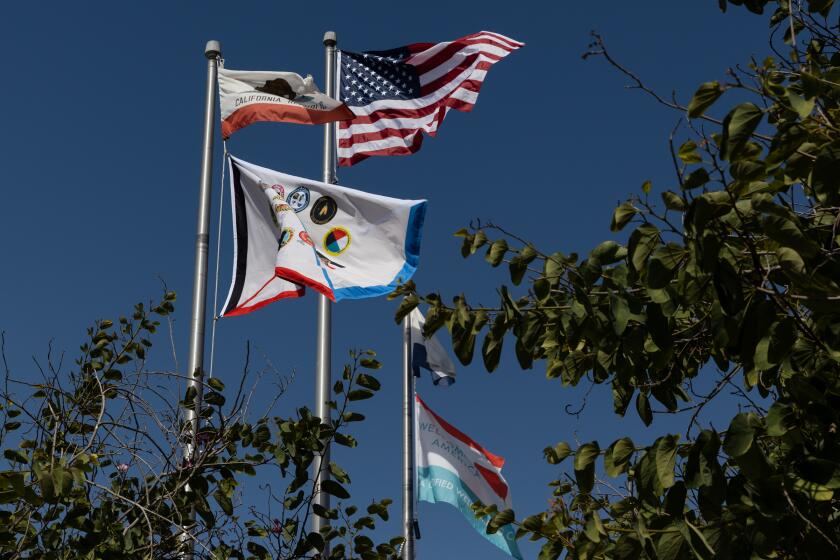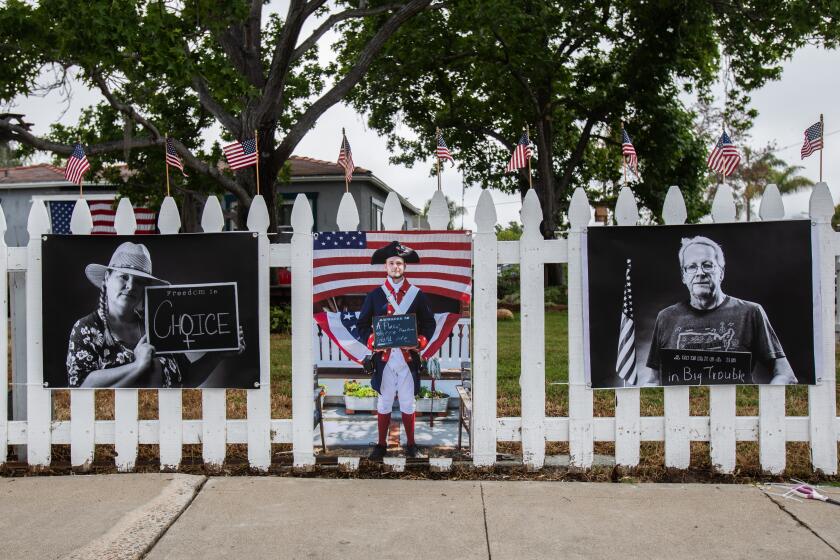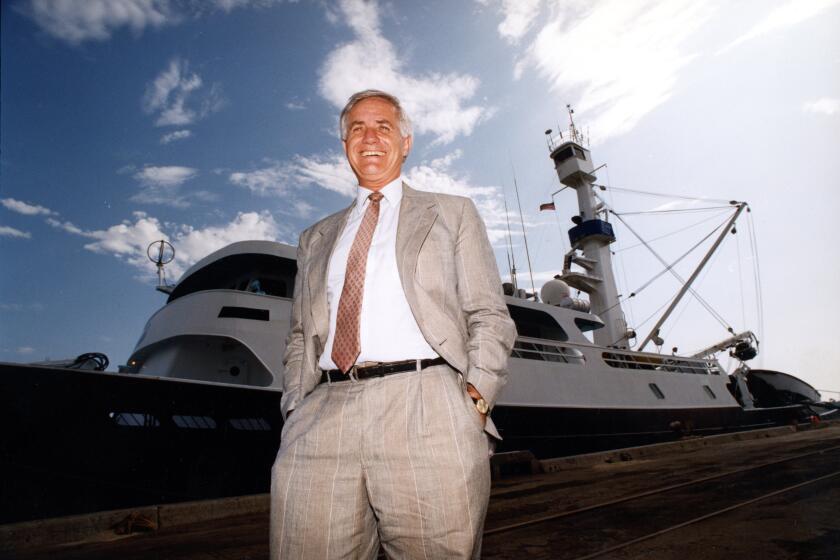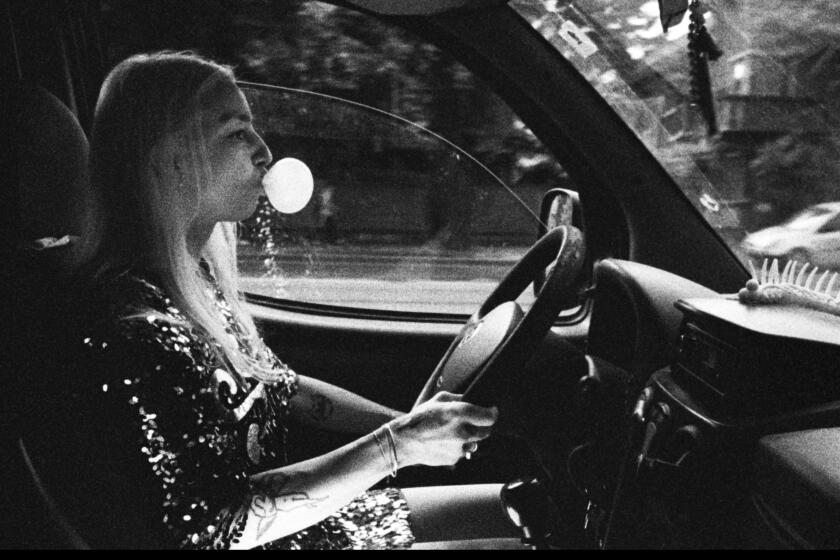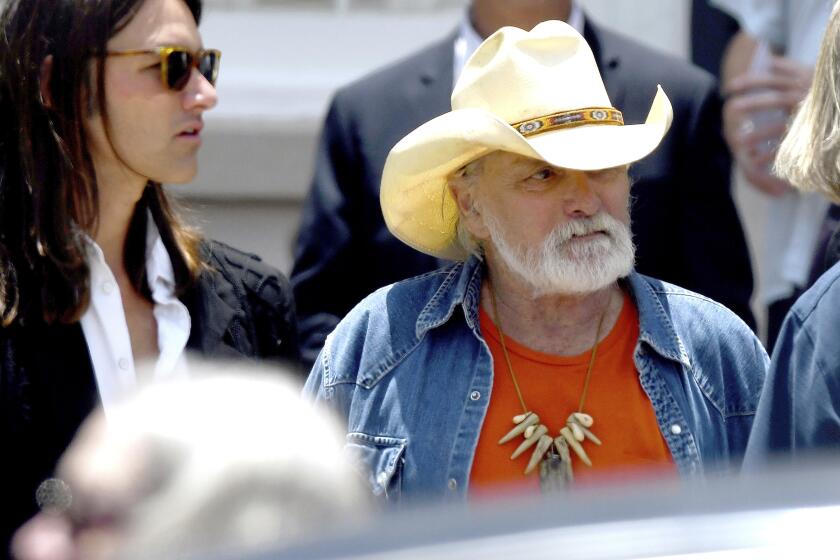Book of poems tackles climate change
Scott T. Starbuck has been teaching creative writing and world literature at San Diego Mesa College for almost 20 years. His book “Industrial Oz” is a collection of environmental poems.
In July, he will be among a group of artists, writers and scientists participating in a monthlong residency in the Oregon outback devoted to climate change. It is put on by PLAYA, a nonprofit organization that “encourages dialogue between disciplines to bring positive change to the environment and the world.”
Starbuck splits his time between San Diego and the Pacific Northwest, where he grew up.
Q: How old were you when you wrote your first poem?
A: I was probably 11.
Q: Do you remember what it was about?
A: There was a poem by Tom Lehrer in my science textbook that went, “If you visit an American city/You will find it very pretty/Just two things of which you must beware/Don’t drink the water and don’t breathe the air.” I thought that was kind of cool that someone was writing about social problems. I thought I would do that, too.
Q: So you were interested early on in work that has an environmental theme.
A: I have two main rivers that I swim in as far as poetry goes. I write environmental poems, and I write Pacific Northwest nature poems, many of them about fishing. One of the reasons I care so much about climate change is that I’ve spent over 45 years on wild rivers and in old-growth forests in Oregon.
Q: How does the process of writing a poem work for you? Do you know where you’re going when you start?
A: Sometimes. I’m a right-brain person, which means I work on intuition and deep listening. Sometimes I have a pretty clear sense. A couple of days ago, my wife asked me if I caught any fish, and I said, “No,” and then she was kind of joking with me about why I didn’t catch any fish. When I sat down to write that poem, I knew what was going to happen in it. I was going to use humor and dialogue and talk about the relationship I have with my wife.
Q: How do you know when a poem is done?
A: I don’t think it’s ever done. There’s a famous quote that nothing is ever done; it’s just abandoned to editors. It reaches a stage where I feel good enough to let it go, to send it off to a literary journal or put it in a book and move on to the next one.
Some of them are done the same day. One of my poems I worked on for more than six years. Every poem has a life of its own.
Q: How did you decide to do a whole book of environmental poems?
A: I had a chapbook come out called “The Other History,” and it was the same kind of subject matter. I saw that some people were reacting against that book. There’s this idea in writing that if someone has a really strong reaction for or against your work, it’s a positive thing, because apathy is what you don’t want.
I was stunned by the lack of awareness among my colleagues and people in society at large regarding some of the reality concerning climate change. Rather than beat them over the head with facts and science, I thought it would be useful to put what I was learning into my poems, and that’s why I did “Industrial Oz.”
Q: Why did people react negatively to the earlier book?
A: People are just overwhelmed paying the rent and taking care of the kids and it was like, “Why are you bringing us this painful information?” The main thing I think is to sing a true song, and whether anyone listens to it is secondary.
I did a reading at Cascadia College (in Bothell, Wash.), and after it students asked me about what they should do. My answer was that climate change is such a serious issue, if you are a graphic artist or a musician or an accountant, whatever you are we need your help. For me, being a poet is my way of helping.
I knew that when I set out to do it, it was going to be an uphill battle to get readers. Poetry books don’t sell many copies. I wasn’t really expecting a huge response, but it was something I had to do for my own conscience.
Q: Inside your book is a note that says the poems were written “to increase the chances of Abigail having a decent life, or a life at all.” Who is Abigail?
A: She’s a young girl in Vermont. My publisher was at a party in Vermont, and he saw this clay piece that Abigail had done. He was editing my book at the time, and he thought that clay piece was a perfect fit as the cover art for what I was doing. He let me know about it, sent me some photos, and told me about her.
I thought, this is good because this book is really about future generations.
Get U-T Arts & Culture on Thursdays
A San Diego insider’s look at what talented artists are bringing to the stage, screen, galleries and more.
You may occasionally receive promotional content from the San Diego Union-Tribune.


